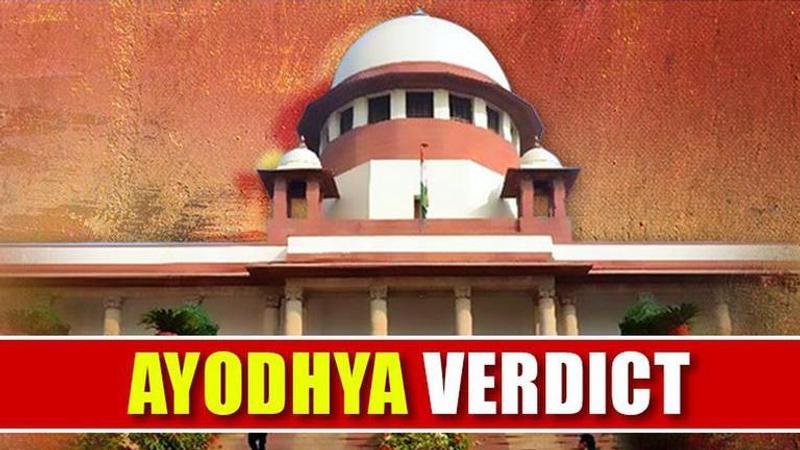Published 11:10 IST, November 9th 2019
Ayodhya Verdict: Disputed land to be given to Hindus, holds SC
Supreme Court on Saturday, delivered a unanimous judgment in the title suit of the disputed area awarding it to the Hindu parties for construction of a temple

Pronouncing the landmark judgment in the Ayodhya dispute case, the Supreme Court on Saturday, delivered a unanimous judgment in the title suit of the disputed area awarding it to the Hindu parties for the construction of a temple. It also directed the Centre to come up with a scheme within three months to set up a trust which will hand over the outer courtyard and inner courtyard of the site for construction of a temple. Apart from this, the SC stated that an alternate land of 5 acres is to be allotted to Muslims for the liberty of constructing a mosque either by the central govt or the State govt in a suitable and prominent place in Ayodhya.
SC awards disputed land to Hindus, alternate land for mosque construction
CJI Ranjan Gogoi, while delivering the unanimous judgement, dismissed the claims of the Sunni Central Waqf board stating that the party altered its stance after being confronted with the Archeological Survey of India (ASI)'s findings. It also dismissed the claims of Nirmohi Akhara as it had no 'shebait' (deity worshipping) rights. The final verdict is awaited.
Ayodhya case in SC
The five-judge bench was constituted on January 25, 2019, to hear the long-contested Ayodhya dispute. As the case progressed after the Centre handed over disputed Ayodhya site to original owners, the bench created a 3-member mediation panel. On August 2, a day after the mediation panel submitted the report of mediation to the SC in a sealed cover, the SC stated that the mediation had failed and began day-to-day hearings - which ran for 40 days, along with a parallel mediation process continuing. The SC announced that it would wrap up the hearing on October 17 and announce its judgment by November 17. Finally, on October 16, the Supreme Court concluded its hearing, reserved its order and the mediation panel submitting its settlement report before the Supreme Court after the Sunni Waqf board surrendered its claim over the disputed land in Ayodhya.
Allahabad HC verdict (2010)
The three-judge bench had unanimously decided that the disputed land should be split equally, with a third of the property going to each party. But the bench was not unanimous on its findings as to whether there existed a Hindu temple that was demolished to build the Babri Masjid, with Justices Agarwal and Sharma favoured for a Hindu temple-like structure had been demolished in order to build the Babri Masjid mosque and Justice Khan concluded that the Mosque was constructed over the ruins of temples which had been there for a long time.
Hindu parties were awarded the portion before the central dome of the "three-domed structure" (mosque), where a makeshift idol had been kept, in view of the Hindus' belief in the area as the birthplace of Lord Ram. On the other hand, the Nirmohi Akhara was allotted a part of the property in the outer courtyard on which stood the Ram Chabutra and Sita Rasoi structures. Meanwhile, the Muslim Parties were to be given the remaining portions of the property (both inner and outer courtyard), as per the verdict.
What is the Ayodhya Land dispute?
While the dispute of the existence of a temple prior to the mosque has been contested for 461 years, the point of contention started when in December 1949, a crowd entered the mosque and installed a Hindu idol beneath the Central dome of the mosque, believed to be the birthplace of Ram. After the incident, the area was sealed off till 1986 - when it was unsealed on the orders of a civil court, allowing Hindus to worship under the Central dome of the mosque where the makeshift temple had been installed. The dispute flared in 1992, when the disputed structure was demolished, after which five cases were filed in the matter, with the Allahabad High Court pronouncing its verdict in 2010.
Updated 12:07 IST, November 9th 2019




